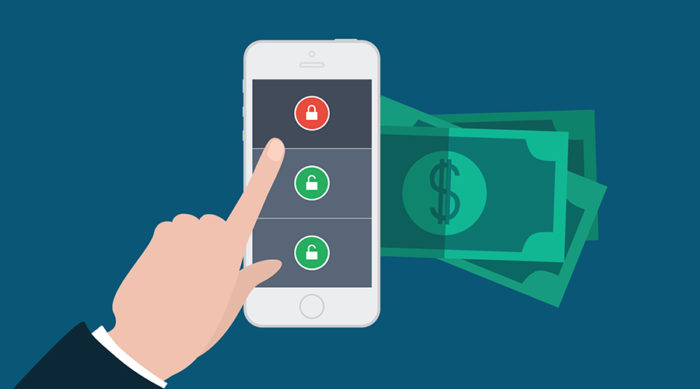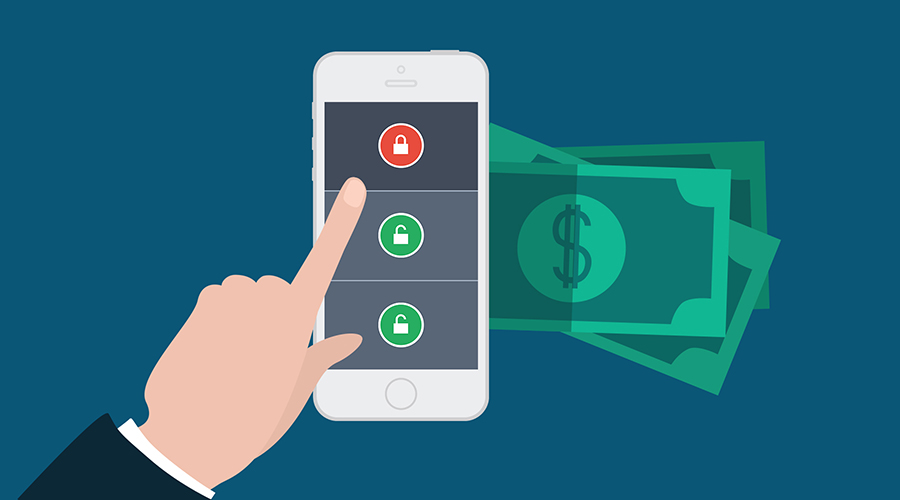Every day, thousands of applications are downloaded from the App Store and Google Play. According to statistics, 78% of them are noncompetitive at the launch stage.
But persistent developers continue to make applications that lose the battle for the attention of users, which means they are poorly monetized.
Table of Contents
Mobile App Monetization Working Strategies

It is necessary to think over the monetization strategy in advance, long before the application is ready.
With a clear monetization scheme at the start of development, you can create an application where monetization models will complement it, and not interfere with users.
Preparing an application for monetization
Before launching the application in the ”advertising voyage”, check with this checklist – it will help to identify gaps and “bottlenecks” in the application before users see them. Read about other ways to earn money on mobile apps on freeappsforme.
Monetization models review :
Advertising in applications
This is one of the most common ways to monetize free apps. The golden rule of monetization says: no annoying ads, otherwise, the user can simply delete the application.
Many developers start monetizing with ad networks (AdMob, Mopub, etc.) But if you want to save time, use the Epom Apps smart application monetization platform, which unites all ad networks and selects an optimization team for each client.
For developers, this model is good because you can optimize the game, while experts optimize advertising.
Pros:
+ it is easier to attract users to a free application, which means you can monetize it very soon;
+ variety of ad formats.
Minuses:
– not suitable for niche applications that solve the immediate need of the user (taxi order).
Freemium
The freemium model provides access to the basic functions of the application, for the full functionality you need to pay extra from $ 0.99.
The success of Freemium applications depends on the number of users who are loyal and willing to pay for the expansion of functionality.
Suitable for: games, educational applications, and products, any multi-level application that involves progress (Lingualeo, Evernote).
Pros:
+ easy to implement if your application has advanced levels or functions;
+ “try it for free” model increases user loyalty;
+ a great model for applications that focus on immediate customer demand.
Minuses:
– the total cost of using the application is unclear from the outset;
– according to statistics, 0.5-2% of users will pay for your application;
– if the free features of the application are not good enough, users will lose the motivation to pay more.
Paywall subscription fee
Paywall – a system in which part of the content on the site is available for a fee.
Most often this scheme works: viral content, guest posts, and news are provided free of charge; and complex analytical materials, reports, and exclusives are available only to subscribers.
For example, the Medium application is free, but with a limit on the number of articles read. There is also a Premium profile, where there are no restrictions on the number of articles that can be read, but there is an option to read articles offline, and many other bonuses.
Pros:
+ regular payments from loyal users;
+ user life cycle increases, user retention.
Minuses:
– not suitable for beginners: for the loyalty of users you need to build fame and reputation;
– it is important to use exclusive content.
Shopping inside the application (Free to play)
Applications that are monetized in this way sell real and virtual goods through applications.
Pros:
+ low risk/high profits, especially with the sale of virtual goods;
+ flexible enough to support affiliate programs.
Minuses:
– most trading platforms use a large percentage of profits up to 30-40%;
– it is necessary to include the additional protection to prevent accidental purchases in the application.
Sponsorship
In the free application offers from the sponsor are shown: if the user reaches some goal or passes the next level, he gets a discount from the sponsor. The developer or publisher of the application receives a percentage for each offer made.
Often such sponsorships arise between applications and brands of similar subjects.
An example of sponsorship is the RunKeeper fitness app. Users are invited to perform certain actions or improve their performance, in return for gifts and discounts from brands.
Pros:
+ fits any niche;
+ high level of user engagement.
Minuses:
– finding sponsors with a similar target audience is not always easy.
Trends
Every year in the world there is a huge number of articles about trends in mobile advertising. It is physically impossible to test and implement each, but there are several factors you should always pay attention to when revising your monetization strategy.
1. Application performance metrics.
The more you know about your users, the easier it is to develop a winning monetization strategy for the application: you can grow and adapt to new needs, add the necessary functionality and respond quickly to changes.
Start with the main metrics: MAU, DAU, LTV (user life cycle) and churn rate (user churn rate).
2. Programmatic buying.
Purchase of real-time advertising based on socio-demographic and behavioral data about users, which are available to both the site and the advertiser.
This approach allows to improve the targeting and move from the purchase of advertising places to the purchase of the target audience.
This means that you can show your users more relevant ads. Update the app, use native ad formats and work with trusted advertisers.
3. Native and video ad formats.
Follow the emergence of new advertising formats – video and native advertising are well proven in applications with a large outflow of users.
Advertising should be UX-friendly, that is unobtrusive. Do not be afraid to move away from simple banner advertising with a small but stable income.
If you want to try the new format, but are not sure that you are integrating it correctly, contact the pros, they will check your application and determine the best places for advertising.
4. Follow the new geo.
According to statistics, 50% of all global gaming sessions take place in America, India, China, Brazil and Russia. Pay attention to new growing markets: Vietnam, Latin America, etc.
5. Look for new opportunities.
Forget that the App Store has the most solvent audience. Without substantive market research, you will find inevitable disappointment: the portrait of the user that you presented during the development will be very different from the real one.
Remember that in the most competitive niche everything goes to those who “had time to be the first.”
We hope that this article will help you choose the right strategy and maximize your potential profit.
- 11 Best Photo Scanning Apps for iOS and Android (Updated) - July 10, 2024
- Guide to Choosing the Best Spy Phone App in 2023 - April 20, 2023
- Playable Ads: Get All the Juice Out of Your Advertising Efforts - April 6, 2023

